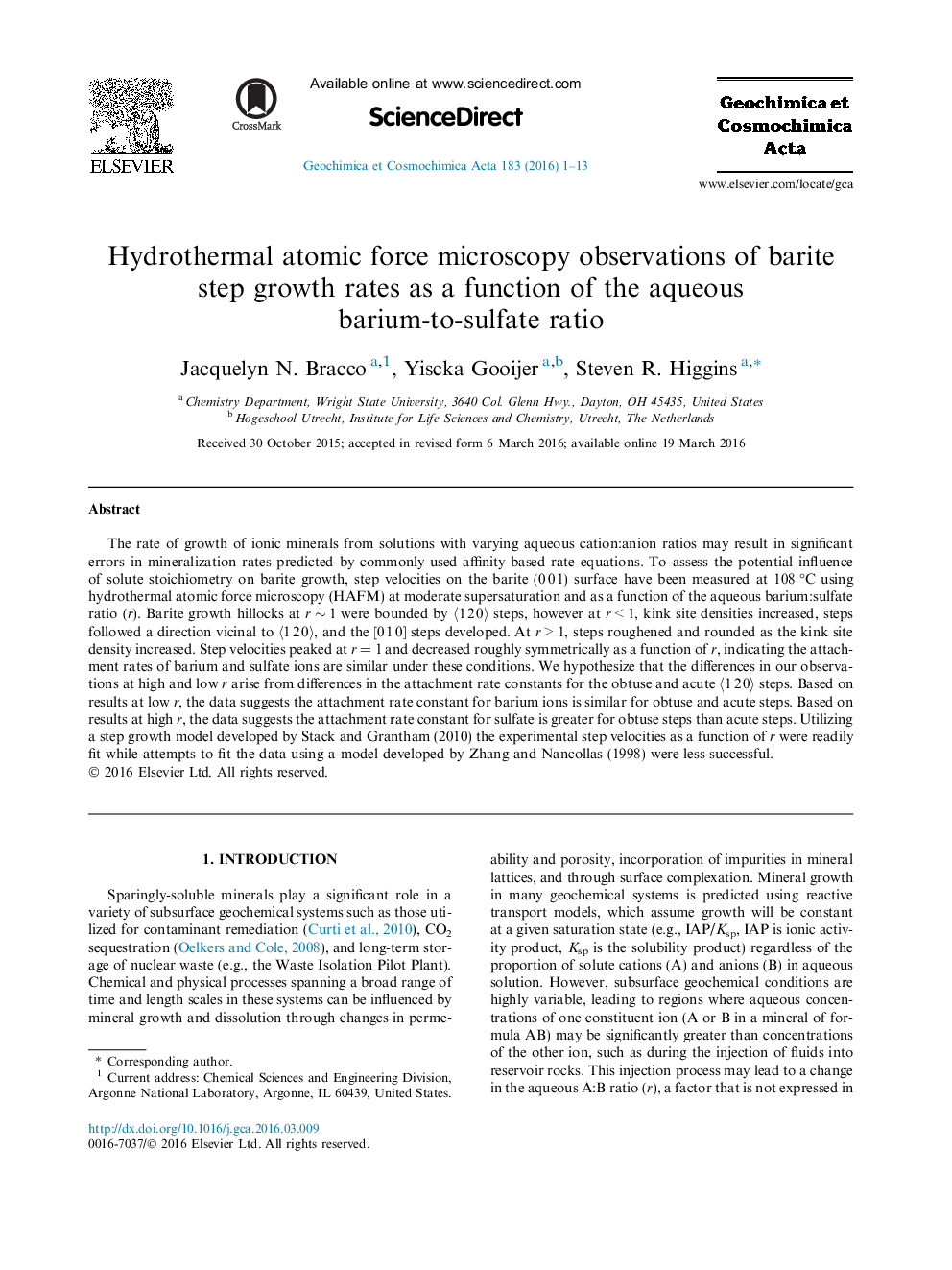| Article ID | Journal | Published Year | Pages | File Type |
|---|---|---|---|---|
| 6437207 | Geochimica et Cosmochimica Acta | 2016 | 13 Pages |
The rate of growth of ionic minerals from solutions with varying aqueous cation:anion ratios may result in significant errors in mineralization rates predicted by commonly-used affinity-based rate equations. To assess the potential influence of solute stoichiometry on barite growth, step velocities on the barite (0 0 1) surface have been measured at 108 °C using hydrothermal atomic force microscopy (HAFM) at moderate supersaturation and as a function of the aqueous barium:sulfate ratio (r). Barite growth hillocks at r â¼Â 1 were bounded by ã120ã steps, however at r < 1, kink site densities increased, steps followed a direction vicinal to ã120ã, and the [0 1 0] steps developed. At r > 1, steps roughened and rounded as the kink site density increased. Step velocities peaked at r = 1 and decreased roughly symmetrically as a function of r, indicating the attachment rates of barium and sulfate ions are similar under these conditions. We hypothesize that the differences in our observations at high and low r arise from differences in the attachment rate constants for the obtuse and acute ã120ã steps. Based on results at low r, the data suggests the attachment rate constant for barium ions is similar for obtuse and acute steps. Based on results at high r, the data suggests the attachment rate constant for sulfate is greater for obtuse steps than acute steps. Utilizing a step growth model developed by Stack and Grantham (2010) the experimental step velocities as a function of r were readily fit while attempts to fit the data using a model developed by Zhang and Nancollas (1998) were less successful.
